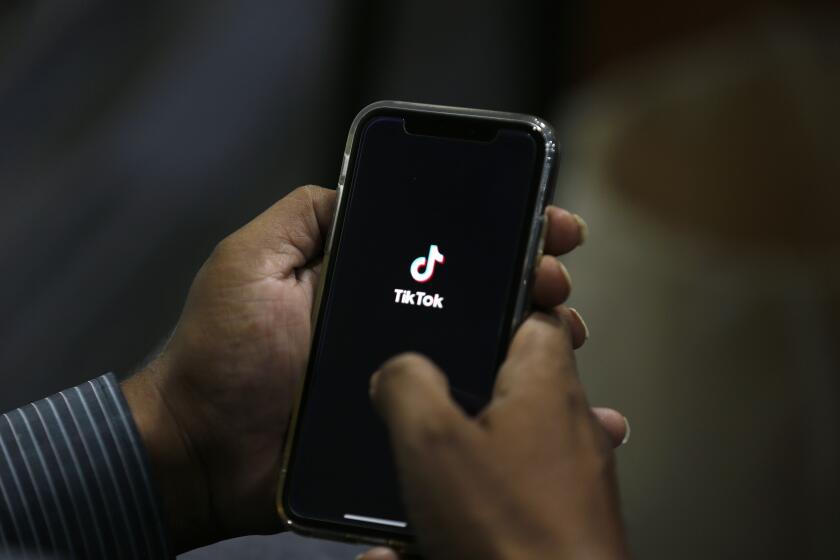Software for Tracking Your Finances
- Share via
January is as good a time as any to take control of your personal finances. So my New Year’s resolution was to set up and use a personal finance program.
I selected the Windows version of Quicken--the best-selling home and small-business finance software. There are also versions for MS-DOS and Apple Macintosh. Like the MS-DOS and Macintosh versions, Quicken for Windows allows you to track your checkbook, credit cards, investment accounts, loans and other assets and liabilities.
For most users, the heart of the program is the checkbook. You make your payments on a familiar-looking on-screen check, and the information is automatically recorded in the register. You can also make deposits, enter banking fees, ATM withdrawals or any other transactions.
The program will print out your checks if you purchase special computer checks. You can also write your checks by hand or transmit them via modem to CheckFree, the Columbus, Ohio-based electronic bill payment service. CheckFree will issue checks or electronic funds transfers on your behalf within five working days. CheckFree pays the postage, but you pay $9.95 a month for the first 20 checks and $3.50 for each additional 10 checks.
Besides a basic check register, Quicken allows you to create up to 255 accounts for all your credit cards and investments as well as other assets and liabilities. Each account has its own register. The investment accounts allow you to keep track of historical records of investments, including price fluctuations, stock splits and share prices. You can set them up for CDs, IRAs, stocks, bonds and mutual funds. You can also set up accounts for your mortgage and other loans. The DOS version has a built-in loan amortization program. The Windows and Mac versions require you to manually enter your interest and principal.
The software has pre-programmed categories for home and business. I use it to track both personal and business expenses. You can delete, add to or modify any of the default categories. You can also set up “classes” to further break down income and expenses. For example, if you operate more than one business, you could use the same categories for all businesses but have different classes so you can generate a separate profit and loss statement for each.
You can optionally assign income and expenses to tax categories and export that data for use with Chipsoft’s TurboTax or Meca’s TaxCut, the two leading tax preparation programs.
Unlike the DOS version, the Windows product allows you to display multiple accounts at the same time, each in its own window. That makes it easy to compare balances from your various credit cards and other accounts. All your accounts can be linked. If you use your checkbook to pay your Visa bill, for example, the funds are automatically debited from your checking account and credited to your Visa. You can also use the same categories in all of the accounts. I often use a credit card to buy office supplies or for business travel. As long as I code it properly, the expenses are automatically debited to the correct category.
The ability to transfer between accounts is, for the most part, a very nice feature. But you have to be careful. In experimenting with the program, I accidentally deleted an entry from a loan account and, to my dismay, it automatically removed the entry from my check register even though the payment was already made.
The program automatically saves data as you work, so there is no need to issue a save command. It also has a backup command. However, unlike other financial programs, it does not prompt you to back up your data when you leave the program.
The program creates several basic home and business reports. Home reports include cash flow, monthly budget, itemized categories, net worth and tax schedules. Business reports include cash flow, profit and loss, balance sheet and payroll. You can also create customized reports by vendor, category or any other field.
The Windows version is able to use the same data files as the DOS version. The programs are fairly similar. However, the DOS version offers an amortization schedule for loans. In an attempt to make the program more intuitive, the Windows version of Quicken has icons on the top of the screen as an optional way to issue commands. Trouble is, I can’t remember what most of the icons stand for. Fortunately, you can also issue commands via regular pull-down menus or via the keyboard. I’ll probably appreciate the icons once I learn their meaning, but I wish they were annotated.
The program has a budget feature that on a monthly basis compares the way you allocate your money to the way you spend it. If you’re like me, get ready for some unpleasant surprises.
The program won’t put money in your pocket, but it might help you better manage the money you have, and, because it does such a good job of tracking finances and savings, it might help encourage you to save money. If you’re not careful, it can also turn you into a financial information junkie.
All three versions of Quicken (Windows, DOS and Macintosh) have a suggested retail price of $69.95 but are generally available for considerably less. Intuit, based in Menlo Park, Calif., can be reached at (415) 322-0573 or (800) 624-8742.
Computer File welcomes reader comments but regrets that the authors cannot respond individually to letters. Write to Lawrence J. Magid, P.O. Box 620477, Woodside, Calif. 94062, or contact the L. Magid account on the MCI electronic mail system.
More to Read
Inside the business of entertainment
The Wide Shot brings you news, analysis and insights on everything from streaming wars to production — and what it all means for the future.
You may occasionally receive promotional content from the Los Angeles Times.










